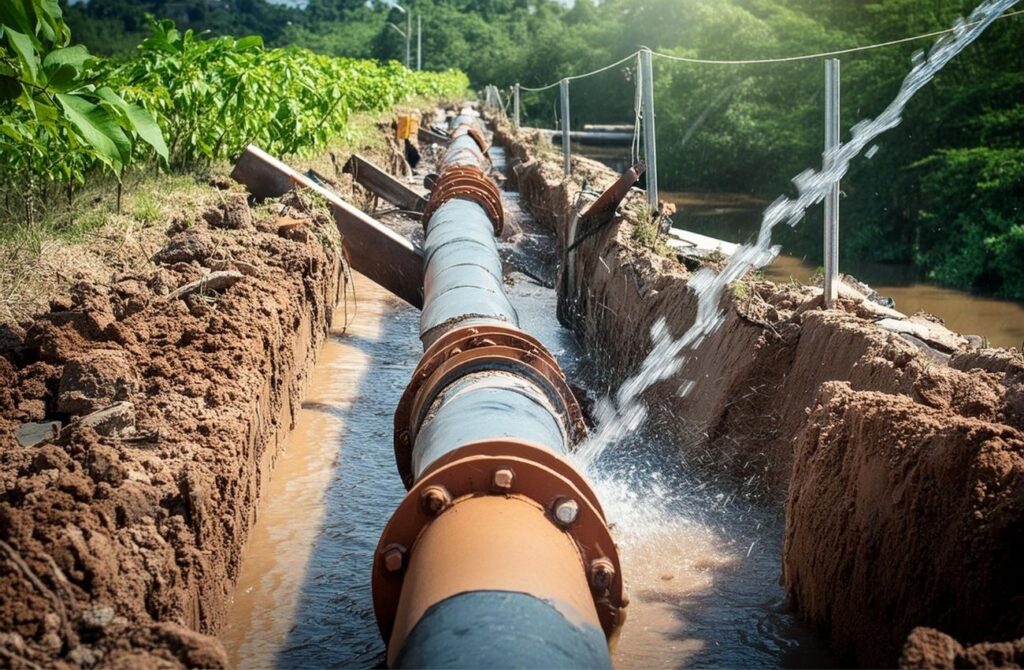In modern industrial and infrastructure systems, pipelines play an essential role. Used for transporting vital resources such as water, natural gas, and oil, these pipelines can experience wear, cracks, or other various damages over time.
Repair clamps provide a quick and effective solution to these issues, preventing potentially significant damage and interruptions.
In this blog post, we will discuss the key features of easy repair clamps, their application areas, and typical problems encountered in these areas along with their solutions.
Key Features and Advantages
Repair clamps are made from durable materials like stainless steel and feature flexible designs suitable for various pipe diameters.
These clamps are known for their excellent sealing properties, providing high resistance to pressure and chemicals. The quick and easy installation process makes them ideal for both emergency repairs and long-term use.
In urgent situations, repair clamps ensure rapid restoration of pipeline functionality, preventing business and service disruptions.
Applications of Repair Clamps
Water Pipelines
Water pipelines are commonly used in municipal infrastructure and building plumbing systems. Repair clamps allow for quick repairs of leaks in these pipelines. They are crucial for preventing water loss and water damage, especially in cracked or broken pipes.
Natural Gas Pipelines
Natural gas pipelines operate under high pressure, requiring prompt intervention in case of damage. Repair clamps can immediately stop gas leaks, minimizing potential threats to the environment and human health. They play a critical role in ensuring the safety of urban and intercity gas lines.
Oil Pipelines
Oil pipelines often operate under harsh environmental conditions. Repair clamps quickly control oil leaks, minimizing environmental damage. These clamps are effective in managing oil spills both on land and offshore.
Industrial Applications
In chemical plants, steam lines, and heavy industry facilities, pipelines are common. Repair clamps provide quick and reliable repairs for any pipeline damage in these settings. The safety provided by repair clamps is essential for continuous operations, especially in environments with high temperatures and corrosive substances.
Common Problems and Solution Methods
Repair clamps play a crucial role in addressing malfunctions. However, their use may come with certain challenges and problems. Here’s an overview of common issues and practical solutions:
Common Issues
- Improper Clamp Size: If the clamp does not fit the pipe diameter perfectly, effective sealing may not be achieved, leading to continued leaks.
- Incorrect Installation: Improper installation, especially if the screws are not tightened adequately, can cause the clamp to loosen and leak over time.
- Material Incompatibility: If the clamp material is chemically or physically incompatible with the pipe material, it can lead to premature wear and failure.
Solution Methods
- Accurate Measurement and Selection: Correctly measuring the outer diameter of the pipe to be repaired and selecting a suitable clamp increases the success of the seal.
- Careful Installation: Properly installing the clamp, ensuring all connections are tightened evenly and with the correct torque, is essential.
- Material Knowledge: Selecting a clamp material that is compatible with the pipe material ensures long-term reliability and performance.
Conclusion
Repair clamps are critical in many industrial and infrastructure applications. When used correctly, they save time and money during emergency repairs and maintenance processes, while also contributing to the longevity and reliability of systems.
If you are considering using repair clamps for your business or facilities, contact Inoxsu to quickly and effectively address malfunctions. Do not hesitate to get in touch with us for any questions or more information.

